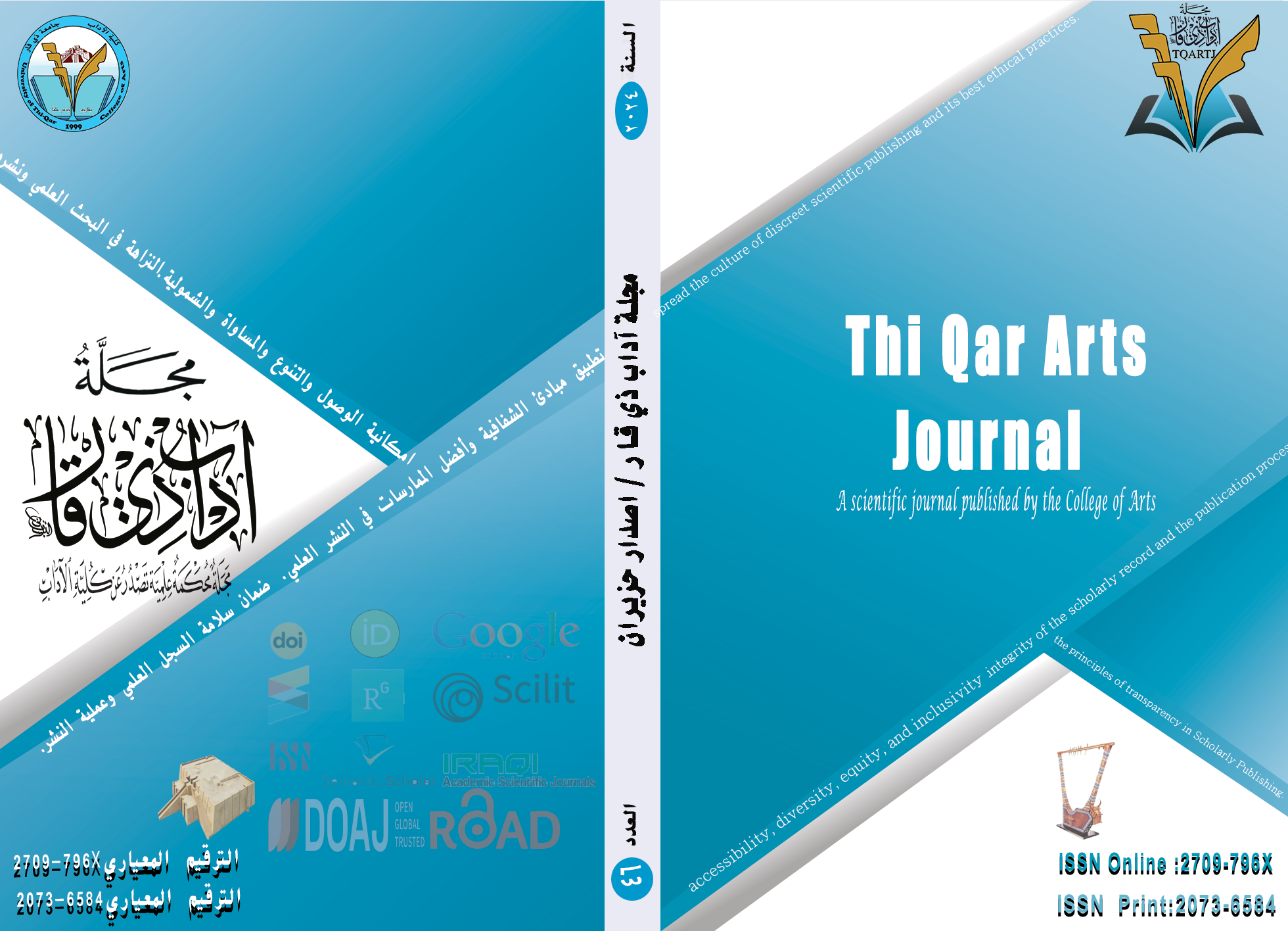An In-Depth Study of Kazuo Ishiguro's 'Never Let Me Go'
DOI:
https://doi.org/10.32792/tqartj.v4i46.588Keywords:
Kazuo Ishiguro, Never Let Me Go, dystopian literature, narrative techniques, memory, identity, ethical implications of cloning, human condition, societal conditioning, existential inquiry, scientific advancement.Abstract
The current paper presents the intricacy of the novel "Never Let Me Go" by Kazuo Ishiguro. This work is a complex combination of themes such as memory, identity, love, loss, and the ethical impacts of scientific progress via cloning. A thorough evaluation of Ishiguro's use of narrative tools, like first-person narrative, non-linear stories, and emotional distance, will show how such methods intensify the thematic import of the novel and give it a philosophical orientation. The narrative analysis focuses on the Hailsham educational system, social control techniques and the attempt by clones to define themselves despite the limited choices they can make. Comparing with other such books, the paper locates Ishiguro's novel in a bigger literary context, highlighting its relevance in the discussions about human nature, ethics, and the risks associated with scientific advances. The last part reveals the novel's powerful take on how to treasure life, look into human relationships, and fight as humans to find a sense of purpose and meaning, even amid loss and fate.
Downloads
References
Alspach, B. B. (2016). Remembering Modernism in" The Remains of the Day,"" Cat’s Eye," and" Atonement". The Claremont Graduate University,
Ang, Y. H. J. (2022). To the ends of the earth: Post-Anthropocene cosmopolitanism in the novels of Kazuo Ishiguro, Margaret Atwood, and David Mitchell. University of Essex,
Ayar, H. (2016). The subjected individual in late modern and postmodern fiction: a comparative study of Aldous Huxley's Brave New World and Kazuo Ishiguro's Never Let Me Go. Namık Kemal Üniversitesi,
Black, S. (2009). Ishiguro's inhuman aesthetics. MFS Modern Fiction Studies, 55(4), 785-807.
Bouacida, S., Lecheheb, I., Boumali, I., & Khlifa, N. (2021). Hailsham as an Intimate Space: A Bachelardian Reading of Kazuo Ishiguro’s Never Let Me Go. AWEJ for Translation & Literary Studies, 5.
Deacon, T. (2006). The aesthetic faculty. The artful mind: cognitive science and the riddle of human creativity, 21-53.
Drąg, W. (2014). Revisiting Loss: Memory, Trauma and Nostalgia in the Novels of Kazuo Ishiguro: Cambridge Scholars Publishing.
Gill, J. (2020). Biofictions: Race, Genetics and the Contemporary Novel: Bloomsbury Academic.
Hansen, D. T. (2019). Ethical visions of education: Philosophies in practice: Teachers College Press.
Harris, S. (2011). The moral landscape: How science can determine human values: Simon and Schuster.
Hodson, D. (2011). Looking to the future: Springer Science & Business Media.
Holt, K. M. (2022). Animal Welfare in Nineteenth-Century British Literature and Law. The University of North Carolina at Chapel Hill,
Kafshchi, S. K., Reesi Sistani, R., & Shahabi, H. (2023). Dromophobia's Veil: Unveiling the Enigma of Hailsham in Kazuo Ishiguro's Never Let Me Go Through a Virilian Lens of Fear and Control. Journal of Teaching English Lnaguage Studies, 8(2), 133-153.
Kashi, S., & Ladani, Z. J. (2017). The representation of Fukuyama’s pathways to a posthuman future in Brave new world and Never let me go. Journal of Literary Studies, 33(2), 18-34.
Kerby, A. P. (1991). Narrative and the self: Indiana University Press.
Kukkonen, J. (2020). " We did it to prove you had souls at all": Expressions of social identity in Kazuo Ishiguro's Never Let Me Go. Itä-Suomen yliopisto,
Nakamura, A. (2021). On the Uses of Nostalgia in Kazuo Ishiguro's Never Let Me Go. Science Fiction Studies, 48(1), 62-76.
Ogston, L. C. (2014). The Clone as Gothic Trope in Contemporary Speculative Fiction.
Panda, P., & Bhattacharya, P. (2024). Exploring the Humane in the Posthuman: A Critical Analysis of Kazuo Ishiguro's Transhumanist Narratives. International Journal of Literary Humanities, 22(1).
Pattison, D. (2024). Neoliberal Humanism: Never Let Me Go and the Value of the Humanities. Critique: Studies in Contemporary Fiction, 1-16.
Price, J. L. (2011). Letting Go and the Silence that Remains: The Effects of Translating Point-of-View from Text to Film in The Remains of the Day and Never Let Me Go: Brigham Young University.
Rastelli, G. (2019). Reimagining the human: an analysis of the posthuman turn in Mary Shelley, Kazuo Ishiguro and Jeanette Winterson.
Reguia, S. (2023). A Psychoanalytic-Marxist Study of the Human Condition in Kazou Ishiguro’s Never Let Me Go.
TAN, H., & YAN, L. (2018). Reconfiguring the Real: Art & Aesthetic Innovation in Kazuo Ishiguro’s Axiomatic Fictions. Durham University,
Topal, M. O. (2023). " It's the meat talking, ignore it": The question of posthuman embodiment In William Gibson's Neuromancer and Kazuo Ishiguro's Never Let Me Go. Middle East Technical University,
Waham, J. J. (2023). The Exploration of Trauma and Memory in Kazuo Ishiguro's Never Let Me Go and The Remains of the Day. Journal of Critical Studies in Language and Literature, 4(3), 16-21.
Wong, P. T. (2020). Existential positive psychology and integrative meaning therapy. International Review of Psychiatry, 32(7-8), 565-578.
Downloads
Published
License
Copyright (c) 2024 Basim Saadoon Muttair

This work is licensed under a Creative Commons Attribution 4.0 International License.
The journal applies the license of CC BY (a Creative Commons Attribution International license). This license allows authors to keep ownership of the copyright of their papers. But this license permits any user to download, print out, extract, reuse, archive, and distribute the article, so long as appropriate credit is given to the authors and the source of the work. The license ensures that the article will be available as widely as possible and that the article can be included in any scientific archive.



















